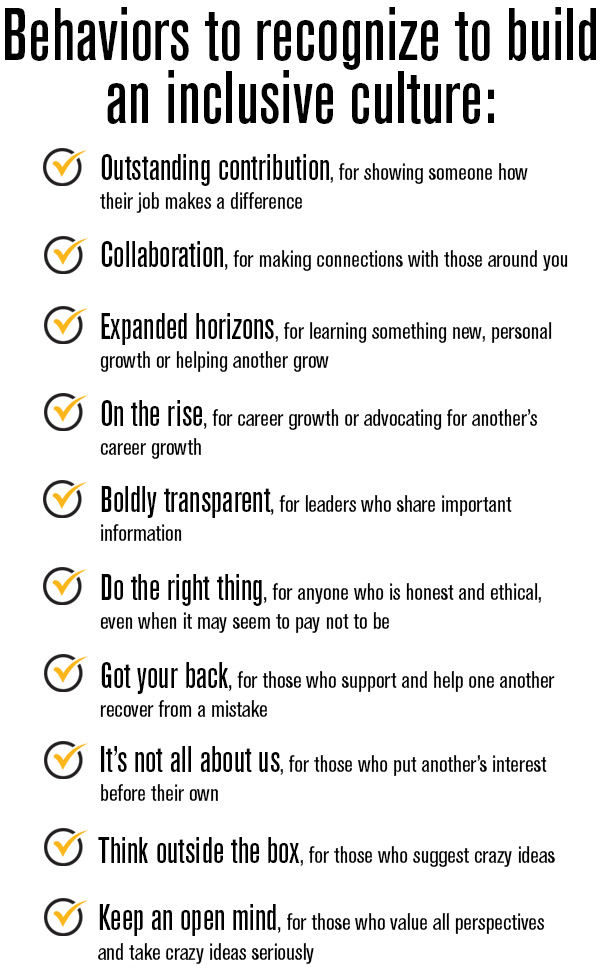Using recognition to create a culture of inclusion
Mar 09, 2020
Written by: Amy Stern, Managing Director, Research and Strategy, BI WORLDWIDE
(View Author Bio)
There are many factors that go into changing your culture to be more inclusive, but perhaps the most powerful way is through recognition.
Scroll Down
How often are your diversity and inclusion leaders talking to your recognition and rewards team? Probably not enough.
When it comes to building an inclusive culture, it needs to be part of the way employees experience working for your company on a daily basis. They need to feel like they belong and can be themselves.
There are many factors that go into changing your culture to be more inclusive: leadership alignment, communications, learning, events, career pathing and even the physical space employees work in. But perhaps the most powerful way to influence culture change is through recognition. Here are three ways recognition builds a culture of inclusion:
 |
People feel valued when they are recognized. In our 2020 New Rules of Engagement® study, we found that 80% of employees who were told they make a difference at work in the past month felt like they belonged versus just 58% of those who were not given any praise. To make recognition even more meaningful, offer it in written form. In the same study, we found twice as many people felt included when they were given a note, e-mail or other form of written recognition within the past month. |
 |
Recognizing inclusivity prompts more inclusive behavior. Inclusion is not built from a single point of contact – employees need to engage in inclusive behaviors on a daily basis. We know from our research there are several key behaviors that lead to an inclusive culture. We also know that what gets recognized will be repeated. As a company, it’s best to create a consistent set of behaviors that align with an inclusive culture and your organizational values. Then, recognize those behaviors whenever they are seen. Use the behaviors below as an initial guide of what to look for but make sure to customize them to fit your unique organization. |
 |
Recognition draws people together. It’s well known that gratitude improves social relationships and strategic recognition creates gratitude for both the giver and recipient. The recipient is grateful to have been noticed and recognized by a colleague. The giver is often showing thanks and appreciation for something the recipient has done. Recognition can enable connections between people on the same team as well as people who otherwise do not interact often, who may not have met or who may be at different levels of the organizational hierarchy. |
Although recognition is just one tool for creating a culture of inclusion, it is a powerful one that shouldn’t be overlooked. Its power stems from impacting inclusion in three ways: helping employees feel valued, reinforcing inclusive behaviors and building connections across the organization.

Download the PDF.
Let's work together to inspire your employees.














